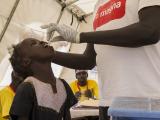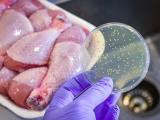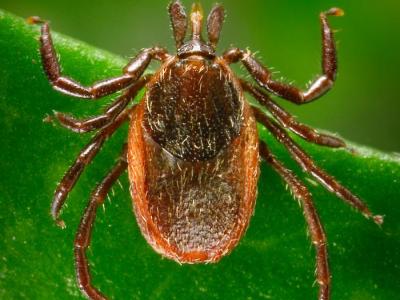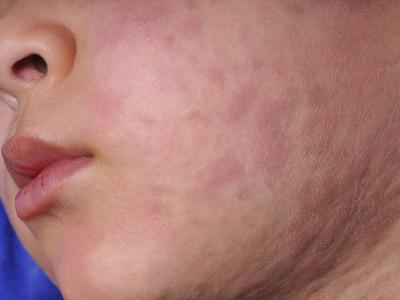Editors Note: This story was revised Oct 6 to clarify Dr Lawrence Goodridges role in the outbreak investigation.
Oct 5, 2011 (CIDRAP News) Investigators working to discover how Jensen Farms' cantaloupe became contaminated with Listeria monocytogenes, leading to the country's deadliest foodborne illness outbreak in almost a decade, are taking a hard look at several environmental factors, including whether sheep grazing in the region may have played a role.
Dr Lawrence Goodridge, a food microbiologist in the department of animal sciences at Colorado State University in Fort Collins, assisted the state health department informally on an unpaid basis in the early stages of the outbreak investigation.
So far federal investigators have detected Listeria on Jensen Farms cantaloupe collected from Denver-area grocery stores and from equipment and cantaloupe at the farm's packing facility in Granada, Colo., according to a Sep 19 US Food and Drug Administration (FDA) statement. Colorado officials have confirmed that cantaloupe from a sick patient's home and from retail outlets match the outbreak strain's genetic fingerprint.
According to an update yesterday from the US Centers for Disease Control and Prevention (CDC), the outbreak has been linked to 100 infections and 18 deaths in 20 states. Last week CDC officials called it the deadliest foodborne outbreak in nearly a decade.
All potential sources of contamination are being considered, including irrigation water, soil, "biosolids," and contamination from animal incursions, Goodridge said. Biosolids are processed residual material from sewage treatment that is used as fertilizer on farms. He said biosolids were spread on a field adjacent to Jensen Farms 2 years ago.
Though investigators haven't mentioned focusing on a suspected animal vector, Goodridge said one possibility is sheep. In the region of Colorado where cantaloupes are grownthough not necessarily at the farm implicated in the outbreaksheep are often grazed on cantaloupe fields following harvest, he said.
"If that practice was followed at Jensen Farms, then there is the possibility of sheep manure contaminating the cantaloupe with L monocytogenes," he said. A similar scenario occurred in Nova Scotia, Canada, in 1981 when a Listeria outbreak caused by tainted cabbage was traced to the use of sheep manure as fertilizer, Goodridge added.
The Canadian Listeria outbreak sickened seven adults and led to 34 perinatal infections, according to a report on the outbreak published in 1983 in the New England Journal of Medicine (NEJM). After two case-control studies found no common environmental or food exposure among the sick patients, a second food survey found a link to eating coleslaw.
A coleslaw sample from a patient's refrigerator was positive for the outbreak strain of Listeria, called serotype 4b. The product trace-back revealed that a regional firm made the coleslaw with cabbage and carrots from several wholesalers and local farmers and distributed the product only in Canada's Maritime Provinces.
Environmental tests at the coleslaw plant found no Listeria contamination, but after prolonged cold enrichment, two unopened packages purchased at two Halifax grocery stores tested positive for Listeria serotype 4b. The produce-trace back led to a farm where both cabbage and sheep were raised. According to the NEJM report, two of the farm's sheep had died from listeriosis, though isolates from the animals weren't available for serotyping.
The farmer had used composted and raw manure from the sheep flock to fertilize the cabbage crops. The coleslaw plant had received a shipment of cabbage that had been kept in the farm's cold-storage shed over the winter. None of the stored cabbage was available for testing, and environmental samples from the farm never yielded Listeria, according to the report.
Canadian investigators wrote that the farming practices provided ample opportunity for introducing Listeria into the food chain and that prolonged cold storage of cabbage could have allowed a small amount of initial contamination to grow. Unlike other foodborne pathogens, Listeria can flourish in cold conditions.
Goodridge said another puzzling aspect of the cantaloupe Listeria outbreak is that four different pulsed-field gel electrophoresis (PFGE) profiles have been identified, falling into two distinct serotypes, which could suggest multiple contamination events or a contamination event from multiple sources, such as different animals.
The size and lethal nature of the Listeria outbreak is surprising, Goodridge said, adding, "And all this involving a commodity [cantaloupe] that had not previously been implicated in outbreaks of listeriosis."
Listeria contamination in cantaloupe, along with an even more recent recall of California lettuce for potential Listeria contamination, might prompt the FDA to revisit its Listeria risk assessment for fresh produce, which is currently considered a low-risk food category, Goodridge said. On Sep 29 TrueLeaf Farms of San Juan Bautista, Calif., recalled 90 cartons of chopped romaine lettuce after a random check of a single bag turned up L monocytogenes. No illnesses have been reported. The products were shipped to a distributor in Oregon that sent them to at least two other states, Washington and Idaho.
It's too soon to predict how the Listeria outbreak might affect produce companies, Goodridge said. While the overall produce industry might not be hurt by the events, the cantaloupe industry will likely suffer financial fallout, because many people can't or don't distinguish between growing areas, though some who are now avoiding cantaloupe might forget about the outbreak by the next season's harvest.
"The real concern is the fact that the cantaloupe industry in Colorado is very small and typically family run, and some growers are now deciding whether or not to grow cantaloupes next year because of the outbreak," Goodridge added.
See also:
Sep 19 FDA press release
Oct 4 CDC outbreak update
Jan 27, 1983, N Engl J Med report on Canadian Listeria outbreak
Sep 29 FDA recall notice

















